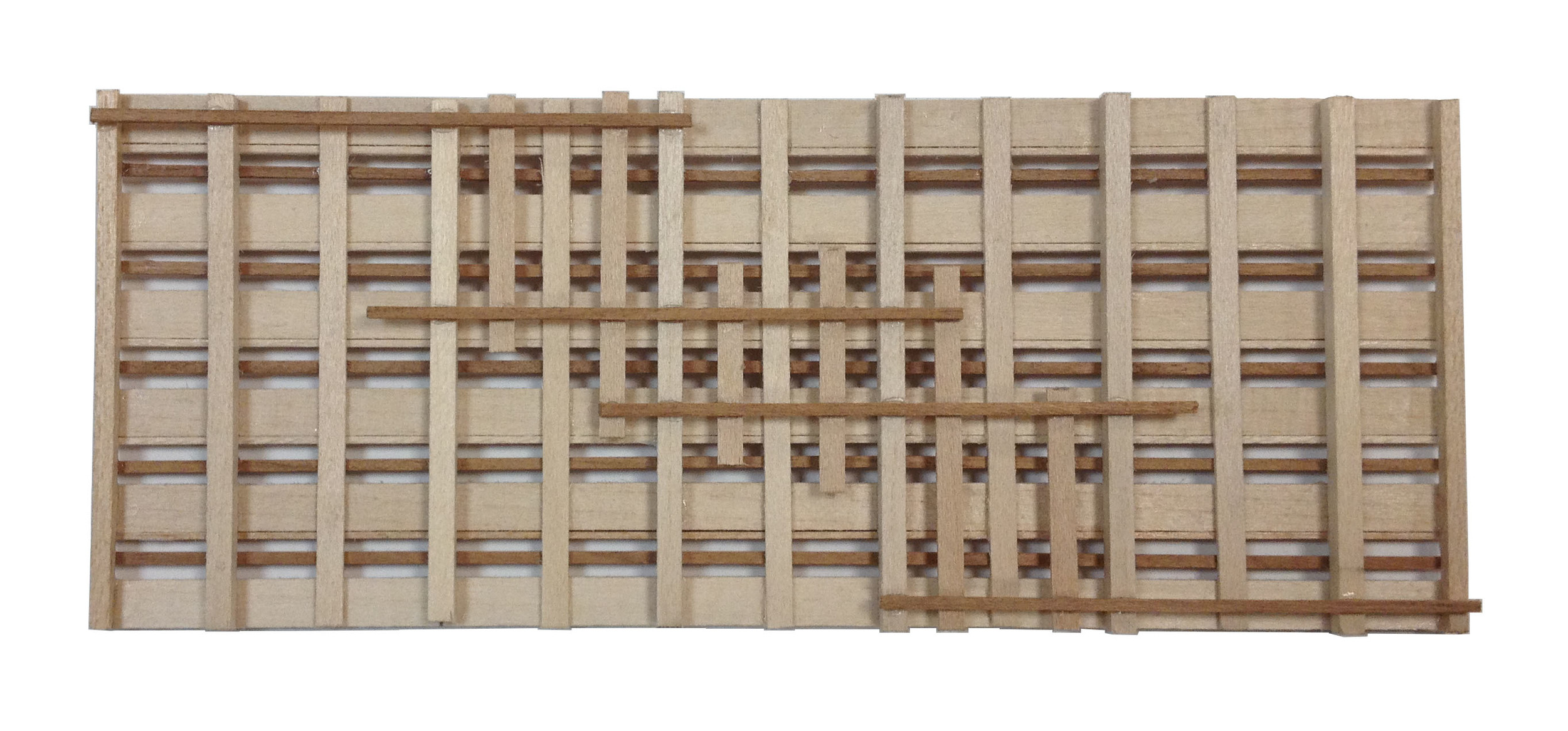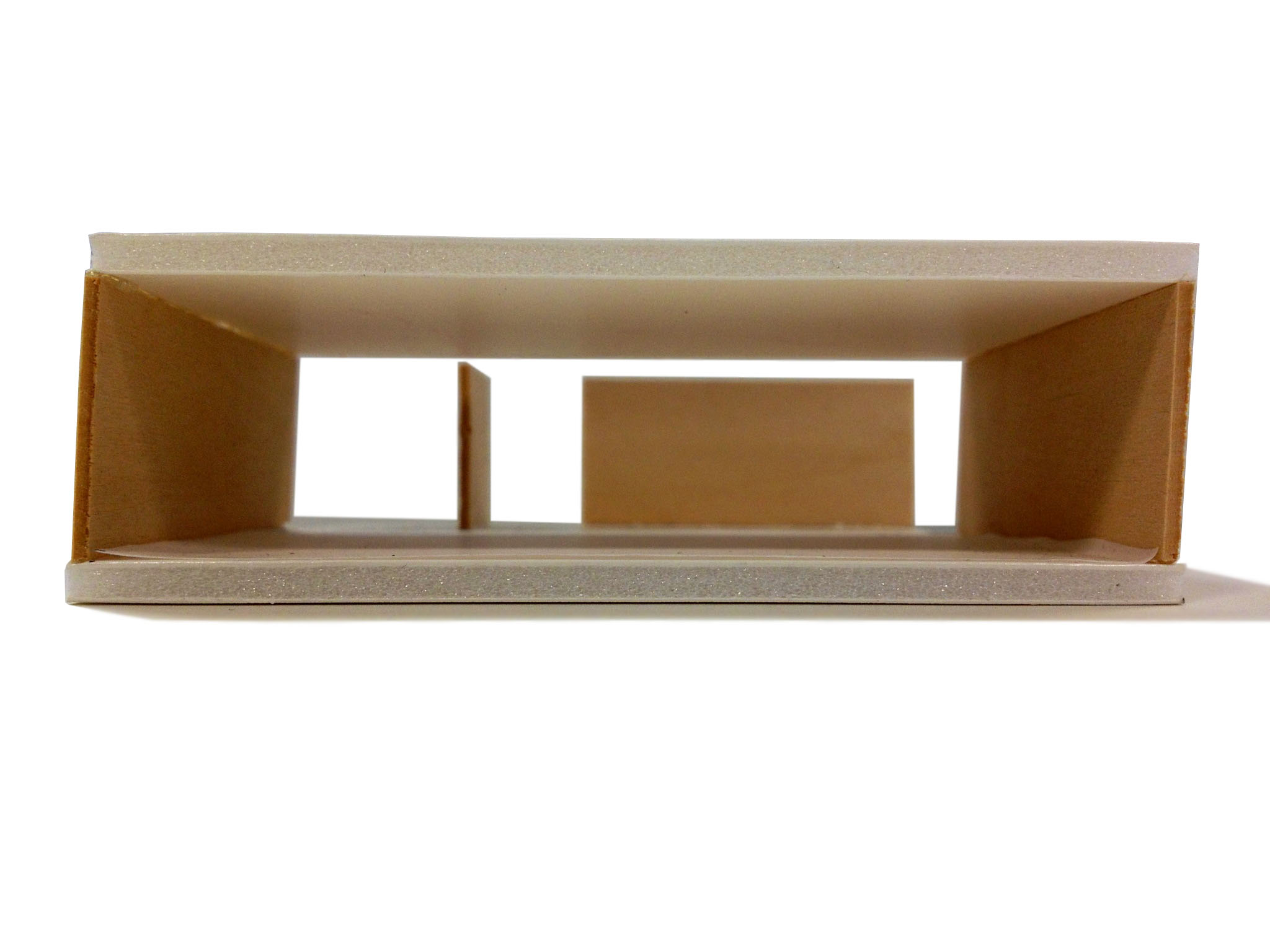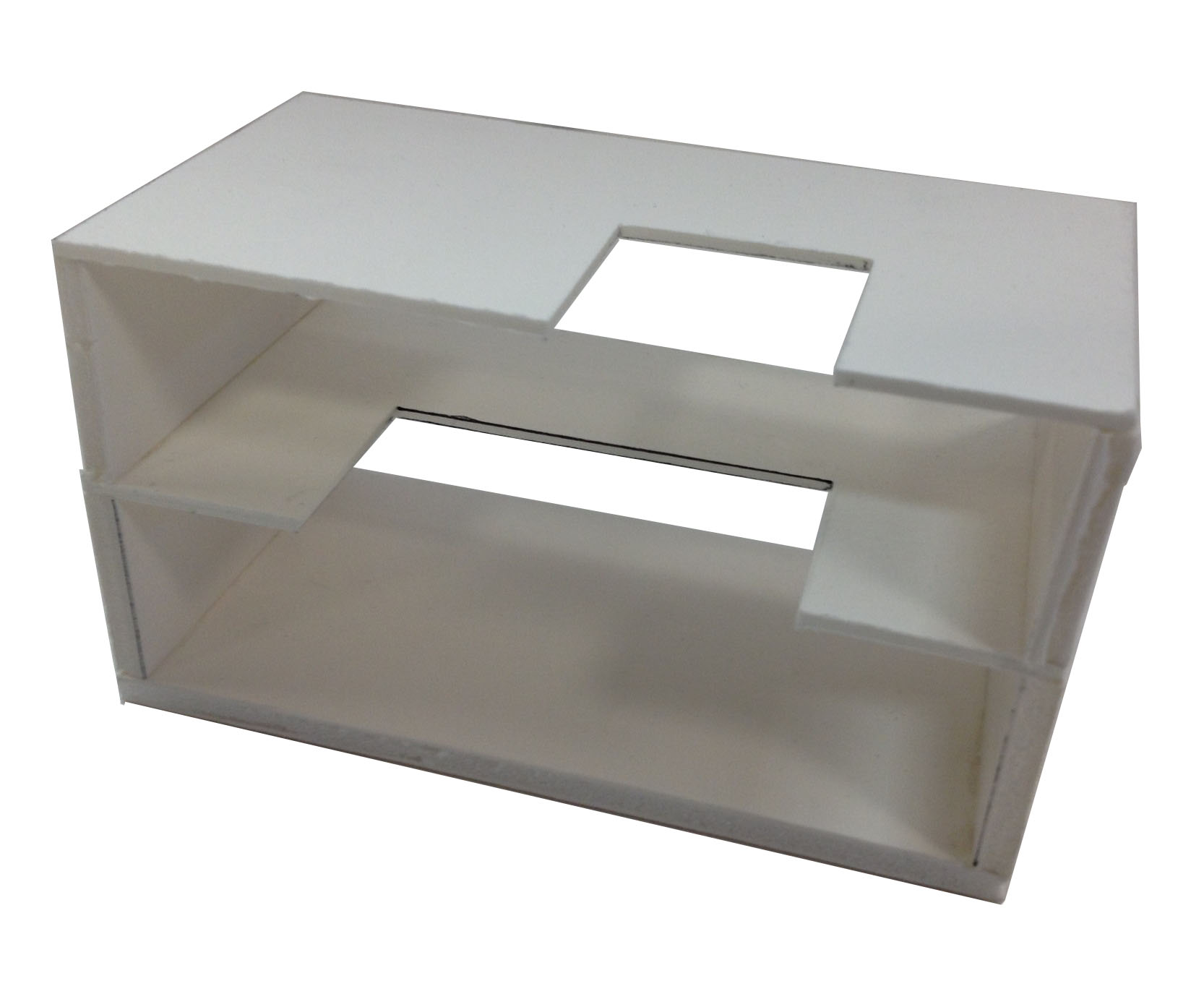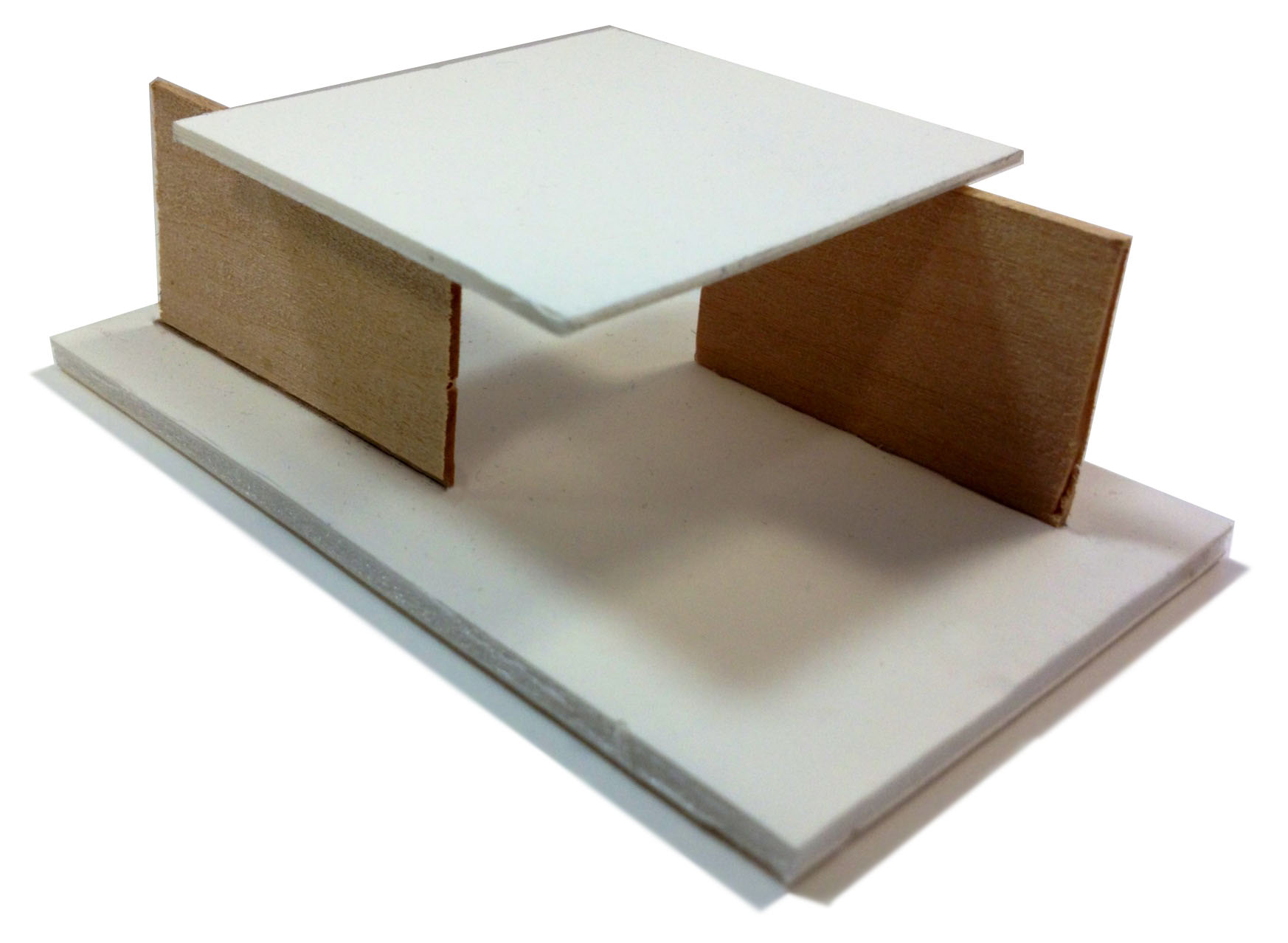The thesis topic was researched by a series of sketches and study models. The research of phenomenal transparency lead to precedent studies from Corbusier’s house at Garches, his League of Nations building complex and Mie van Der Rohe’s Barelona Pavillion. These examples are only a few of many that illustrate how architects manipulate space and its dimensional qualitites.

The sketches and model are experiments with layering overlapping and insinuating borders though planes and barriers. They play with what is foreground middle ground and background and create space without necessarily enclosing it.
These three models made of wood, foam core and matte board all create spaces with different types of spatial ambiguity. They show different spatial orders working together harmoniously. The first model uses a horizontal plane to create the first border and then the vertial plane beyond to act as a second extension of the space. The second model model creates spatial ambiguity vertically by acting first as a stacked rectangular atrium but then can also be equally viewed as an “L” shaped atrium. The third model uses shifted vertical planes to blur where the extents of the rectangular space is while the horizontal defines an inner square area that neither overpowers or destorys the other order.



